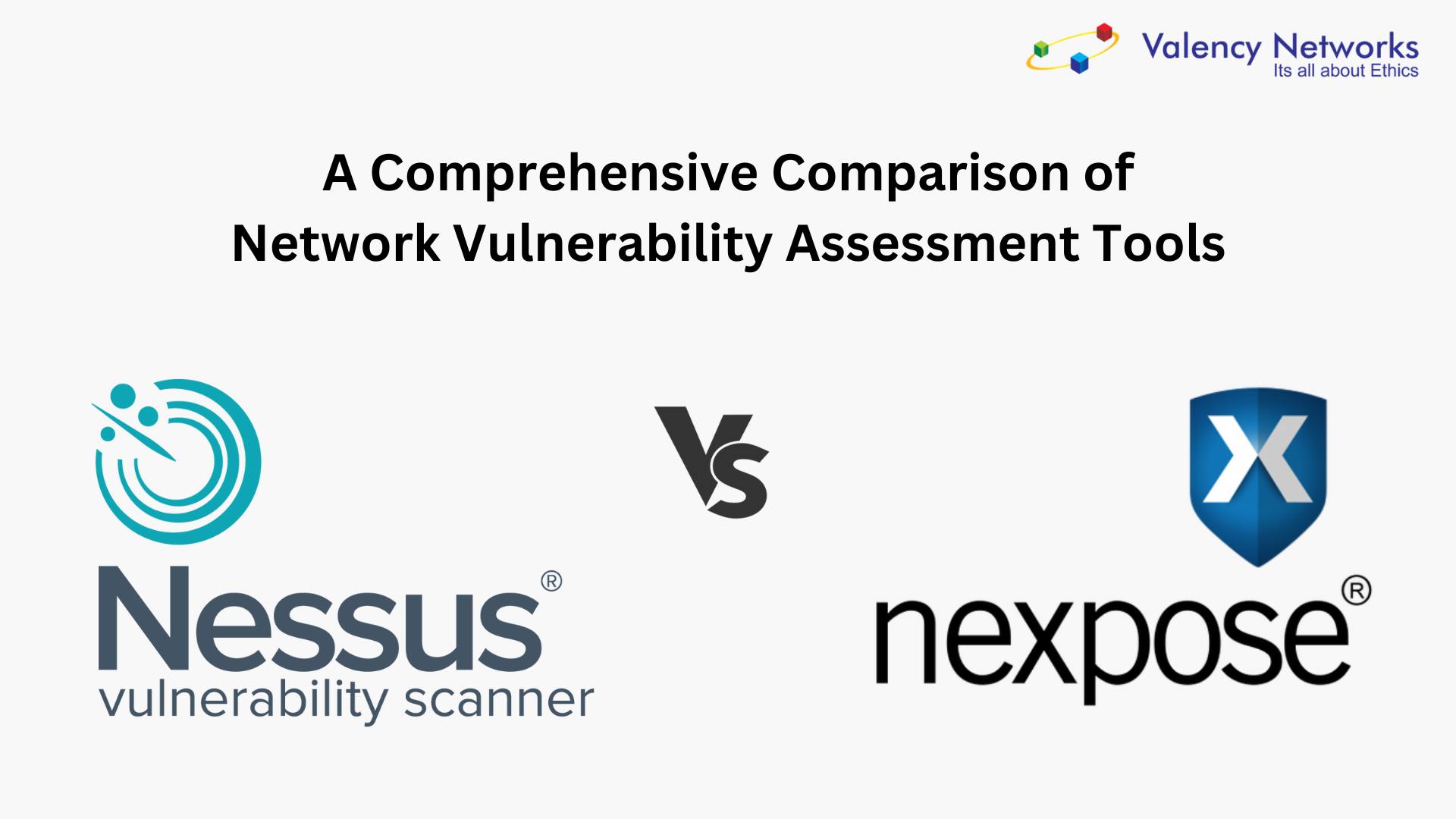- DORA Compliance – A Complete Guide by Valency Networks - 31/01/2025
- Is ICMP Timestamp Request Vulnerability worth considering - 31/12/2024
- Understanding Threat Intelligence in ISO 27001-2022 - 21/11/2024
A Comprehensive Comparison of Nessus and Nexpose in Network Vulnerability Assessment
Network vulnerability assessment is an essential component of modern cybersecurity strategies. Two prominent tools in this field are Nessus and Nexpose, both equipped with powerful features to identify and mitigate vulnerabilities. In this article, we will conduct a detailed comparison of Nessus and Nexpose, examining their features, use cases, and providing real-world examples and case studies.
Nessus
Features and Strengths
- Scalability: Nessus is renowned for its scalability, making it suitable for organizations of all sizes. It can efficiently scan vast networks, including those with diverse infrastructure.
- Extensive Plugin Library: Nessus boasts a vast library of vulnerability detection plugins (over 137,000 as of my last update in 2021), ensuring comprehensive coverage across various systems and applications. For example, Nessus can detect vulnerabilities like Heartbleed (CVE-2014-0160) in OpenSSL.
- User-Friendly Interface: Its intuitive user interface simplifies the vulnerability assessment process, making it accessible to both experienced security professionals and newcomers.
- Compliance Checks: Nessus supports compliance checks for industry-specific standards such as PCI DSS and HIPAA. This feature ensures organizations adhere to regulatory requirements. For instance, it can identify non-compliance with specific PCI DSS controls.
- Customization: Users can customize scans to cater to their specific needs, tailoring assessments to focus on critical assets or specific vulnerabilities.
- Reporting: Nessus generates detailed, easy-to-understand reports. These reports are crucial for communicating security findings to stakeholders and decision-makers.
Case Study: Nessus in Action
Company X, a multinational corporation, deployed Nessus across its global network infrastructure. In a routine scan, Nessus detected a critical vulnerability in the organization’s Active Directory servers. This vulnerability had the potential to lead to unauthorized access to sensitive company data.
Nessus not only identified the issue but also provided actionable remediation steps. The security team promptly addressed the vulnerability, preventing a potential security breach and data loss.
Nexpose
Features and Strengths
- Agent-Based Scanning: Nexpose offers agent-based scanning, which can be beneficial for systems that are challenging to scan remotely or for offline systems. This feature enables comprehensive coverage across complex environments.
- Live Monitoring: Nexpose provides real-time vulnerability monitoring, allowing organizations to track changes as they happen. This is especially useful for detecting and responding to emerging threats swiftly.
- Integration: Nexpose integrates seamlessly with other security tools and offers RESTful APIs for custom integrations. This flexibility enables organizations to build a robust security ecosystem.
- Asset Discovery: Nexpose excels at asset discovery, making it easier to manage a large and diverse network environment. It helps organizations maintain an accurate inventory of assets.
- Custom Reporting: Similar to Nessus, Nexpose offers customizable reporting capabilities. This ensures that security reports align with the organization’s specific needs and requirements.
Case Study: Nexpose in Action
Organization Y, a financial institution, used Nexpose to safeguard its complex network infrastructure. During a live monitoring session, Nexpose detected unusual activity on a critical server. It identified a previously unknown vulnerability that was being actively exploited by an attacker.
Nexpose immediately alerted the security team, who took swift action to isolate the affected server and initiate the incident response process. The quick response prevented a data breach and demonstrated the tool’s effectiveness in real-time threat detection.
Use Cases
- Nessus: Nessus is an excellent choice for organizations seeking a reliable, user-friendly, and comprehensive vulnerability assessment tool. It is particularly well-suited for medium to large enterprises with a budget for licensing costs.
- Nexpose: Nexpose shines in real-time monitoring, asset discovery, and integration with other security tools. It is a strong option for organizations with the technical expertise and resources to manage its complexity and associated costs.
Conclusion
Nessus and Nexpose are both robust network vulnerability assessment tools, each with its unique strengths and real-world applications. The choice between them depends on an organization’s specific needs, budget constraints, and technical capabilities. Regardless of the choice, regular and thorough vulnerability assessments are crucial to maintaining a strong cybersecurity posture in an ever-evolving threat landscape.

